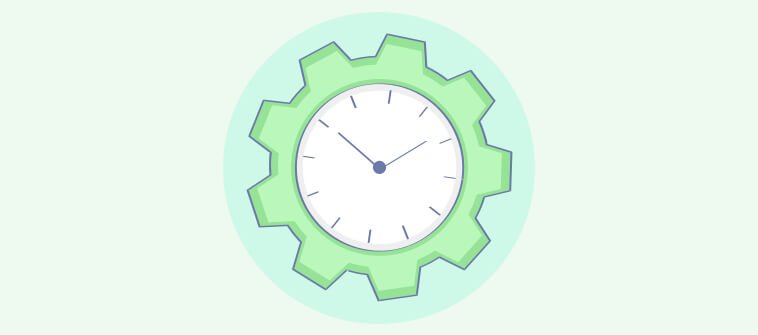Do you understand the journey your customers go through before they buy from you?
The process of buying products or services differs from one person to another. Customer journeys help you comprehend how buyers behave when they visit your online or offline stores. With this knowledge, you can focus on improving those processes so that customers keep coming back.
In a highly competitive business space, it is obvious for you to focus on remaining relevant in your industry and forget the most important aspect of your business – the customer. As such, marketers in many companies tend to make customer optimization journey a priority. This is evidenced by data in an Econsultancy study where 71% of marketers consider the optimization of the customer journey in multiple touchpoints as very important.
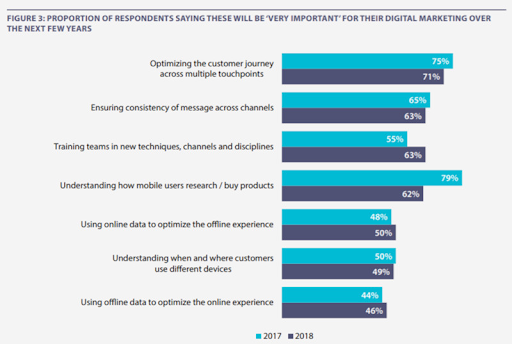
In this article, we will dive into customer journey optimization and tell you what it entails, how it can boost your business growth, and how you can realize it.
What Is Customer Journey Optimization?
Customer journey optimization is a process that involves identifying essential touchpoints in the customer journey, customer interactions, and taking stock of how those interactions happen on different touchpoints with the aim to influence the ultimate experience.
Customer Journey Optimization provides powerful visibility into the multi-faceted interactions we have with our customers. It’s transforming the way we analyze those interactions to diagnose and resolve problems and identify opportunities to improve our customers’ experiences. – Bryan Haas, Head of Customer Experience Strategy at Western Union’s
Optimization of customer journeys can only happen after a business has mapped the customer journey. Customer journey mapping involves looking at the relationship between the brand and the customer from the perspective of the latter.
A Case for Customer Journey Optimization
Providing customers with personal, relevant, and seamless experiences is increasingly becoming a differentiating factor in the current business environment. For this, it’s essential to focus on optimizing customer journeys. Companies that invest in the optimization of customer journeys register many benefits. These include improved customer loyalty and higher revenue. In fact, statistics show that businesses that manage customer journeys effectively can increase revenues by 4% to 8%.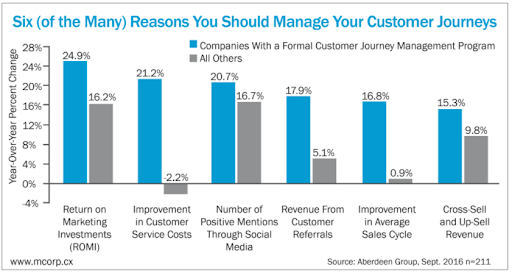
Businesses that provide negative customer experiences characterized by confusion, difficulty, or frustration are likely to lose them to those that offer positive experiences. As a matter of fact, most Americans have, at one time, opted not to purchase due to a negative customer support experience.
At the same time, ⅓ of customers say they would switch brands after experiencing a negative customer experience once. This is precisely why customer journey mapping is paramount.
Before technology got advanced, the customer journey would begin with a print advertisement or a television ad, continue with a store visit or a call and then end with a purchase. Things have changed today. The customer journey is less linear and more complicated due to the presence of multiple media channels, online platforms, immediate research potential, and ease of drawing comparisons.
Important Steps in Customer Journey Optimization
Customer journey optimization requires you to engage customers in every stage of their purchase journey strategically. Here are practical ways that can help you can do this successfully:
Step #1 Map Your Customers’ Purchase Journey and Segment Your Customers
When people visit your digital platform, they generate a massive amount of data that can give insights on individual customer’s journey. However, with customers interacting differently and taking multiple paths on various digital platforms, consolidating all the data points can be an overwhelming process.
This is where customer segmentation comes in. When done the right way, it can simplify customer journey mapping and enable you to determine what your customers need, how to engage them, and how to target them in the sales process.
Here’s how you can go about segmenting your audience:
- Capture relevant visitor data from offline and online sources and store it. This data enables you to identify your customers and understand their behavior. The key here is to know who your customers are
- Analyze data to determine customer segments and create personas. Motivation should be a key factor here as you seek to understand the reasons behind their behavior.
- Develop a customer journey map for each persona and build experiences around this. Consider optimizing messages and map customer interaction points.
- Review your customer journey map for barriers, flows or weak points and refine accordingly
Your customer journey maps will enable you to respond to four key questions in the optimization process. These are:
- Who – Get clarity on who your target audience is.
- What – An understanding of what your business offers – in the form of service, product, or message.
- When – At what points you should contact them.
- Where – The media or communication channel you can use to reach them.
FREE. All Features. FOREVER!
Try our Forever FREE account with all premium features!
Step #2 Engage Potential Buyers at the Top of the Funnel
Failing to engage potential customers who are at the top of your buyer’s funnel correctly and at the right time can cause your business to lose revenue. At this stage of the buyer’s journey, potential customers have not made up their minds to make a purchase.
They know they have a problem and are generally conducting broad research on possible solutions. With digital advancements, buyers may engage with your business by initiating conversations on digital communication channels with the expectation of getting real-time responses.
To ensure that such customers do not terminate their purchase journey, ensure that your service teams provide them with the support they need. Doing this will increase your qualified sales, and ultimately boost customer satisfaction and sales revenue.
Some ideas on how to proactively engage this group include:
- Publishing informative blogs, ebooks and social media content that piques their interest in products or services that you sell
- Provide technical information about the products or services in the form of statistical reports and white papers
- Free product or service trials
Smashbox is an excellent example of a company that has found a way to engage potential customers in the early stages of their purchase journey. Smashbox makes it possible for potential customers to interact with the company by allowing them to upload their selfies while experimenting with the style and color.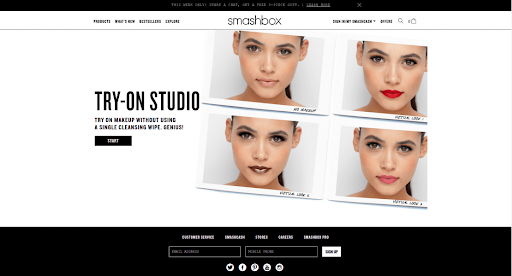
Step #3 Target Potential Customers in the Middle of the Funnel
Often, businesses focus to lead generation strategies on the bottom and top of the buyer’s funnel. The problem with this approach is that customers in the middle of the funnel are left out, despite being at a critical stage of the purchase journey.
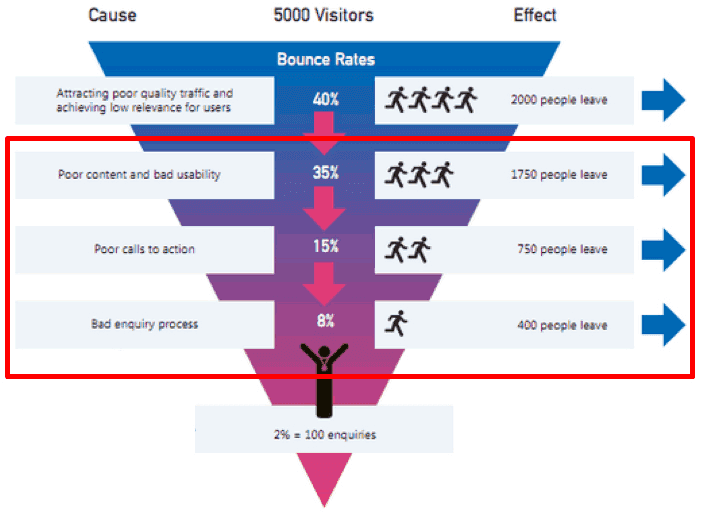 At this stage, customers have expressed interest in your product or service by subscribing to your website. Often, people in this stage are considering making a purchase. They are evaluating the cost of a product or service and validating them with friends or family – a process that could take more or less time. At this stage, you need to position your business as the trusted advisor they need to guide them through their purchase journey.
At this stage, customers have expressed interest in your product or service by subscribing to your website. Often, people in this stage are considering making a purchase. They are evaluating the cost of a product or service and validating them with friends or family – a process that could take more or less time. At this stage, you need to position your business as the trusted advisor they need to guide them through their purchase journey.
Some ideas of what businesses should do at this stage to push this group down the sales funnel include:
- Sharing value-driven ads on social media platforms
- Making products easy to find online
- Providing need-based support and assistance through live chat and customer knowledge base
- Send personalized emails with relevant offers
- Retarget content on relevant communication channels
Step #4 Give Customers Exceptional Experiences
Once your target customers reach the final stage of their journey, your focus should be on delighting them by giving them positive experiences. This means listening to your customers, understanding their support needs, and addressing them in a way that surpasses their expectations.
In simple terms, you need to onboard customers effectively and make them a part of your brand. Onboarding encompasses everything right from familiarizing customers with your product to resolving their queries whenever they arise.
Some of the support requirements of your customers include queries around your product, basic questions on the purchase process, complaints about your product or service, etc.
Ideally, your response to these issues should be adequate, friendly, and quick because customers do not want to be kept waiting or attended by support teams that don’t have the required knowledge.
Some ideas on how to deliver exceptional customer experience to your customers include:
- Create a knowledge base with information that customers need to resolve issues by themselves
- Use of AI-powered live chat to provide round the clock customer service
- Get help desk software to manage customer issues and fast track their resolution
Let’s look at how each of these options enables businesses to enhance customer experiences:
1. Knowledge Base
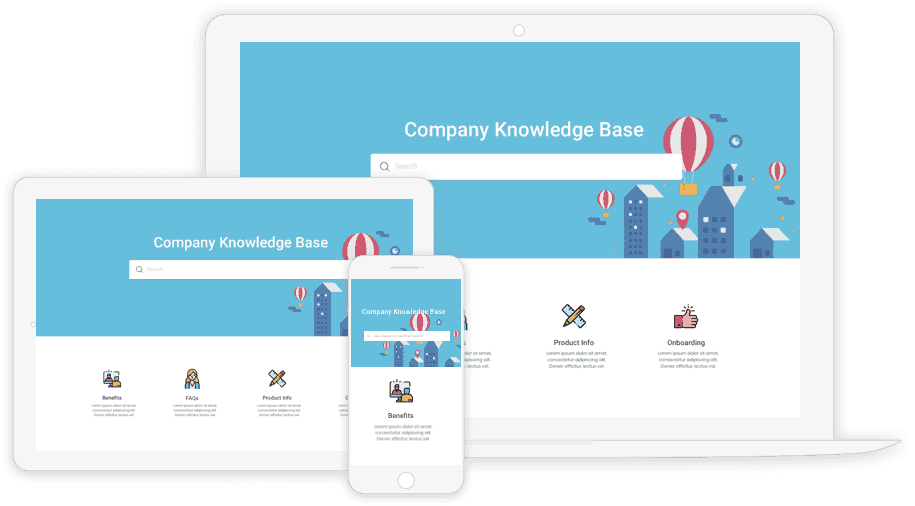 Most customers prefer self-service as opposed to calling customer support whenever they have issues. As such, they expect brands to have a knowledge base in place. This enables companies to:
Most customers prefer self-service as opposed to calling customer support whenever they have issues. As such, they expect brands to have a knowledge base in place. This enables companies to:
- Empower customers with self-help so that they can resolve issues without interacting with the customer support team. With a knowledge base, queries can be answered at the customers’ end itself.
- Provide round-the-clock support to customers in a consistent manner.
- Lower the support ticket volume. This gives customer support staff ample time to attend to more pressing issues.
- Increase customer satisfaction and loyalty. Businesses are able to retain customers, which means consistent sales, lasting success, and higher revenue. Consider even a physical thank you in the form of a customer appreciation swag box.
2. Live Chat
Live Chat is another feasible option for solving queries, as it provides customers with instant responses. Still better than calling and waiting for a response. 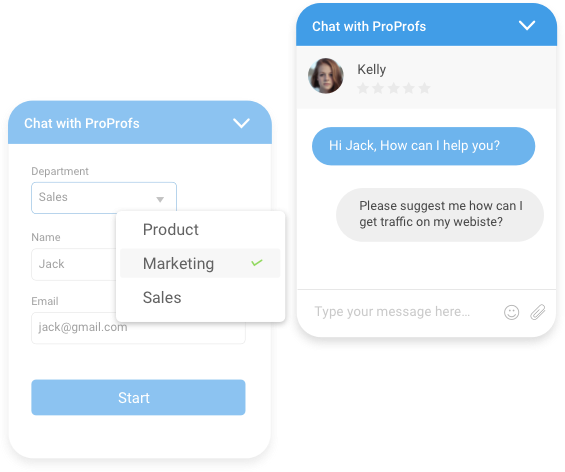 When customers have an issue, they do not want to be kept waiting. Live chat enables businesses to provide accurate responses then and there. Here’s how it boosts customer experience:
When customers have an issue, they do not want to be kept waiting. Live chat enables businesses to provide accurate responses then and there. Here’s how it boosts customer experience:
- Live chat helps in responding to customers in real-time.
- With live chat, businesses can provide support to customers 24/7 as chatbots attend to customer queries in the absence of customer representatives.
- Live chat facilitates interactive engagement between businesses and customers. This interaction builds customer trust, which is useful in boosting customer satisfaction.
- Businesses that use live chat software can also get instant feedback on how customers experience their products or services. This feedback is useful to companies in a way that enables them to make improvements in offerings to suit customer needs better.
Read More: How to Use Live Chat for Customer Journey
3. Help Desk Help desk software enables businesses to manage their customer support function effectively by:
Help desk software enables businesses to manage their customer support function effectively by:
- Facilitating multi-channel communication. Customers expect to receive responses from their favorite brands, irrespective of the communication channel they use to reach out to the company. Help desk software consolidates customer requests from different communication channels in a central location, ensuring that no issues are missed out.
- Tracking support tickets. Businesses that use help desk can track customer tickets to ensure that none goes unaddressed. The tickets are routed to relevant departments to ensure quick resolution.
- Saving time with automated responses. The software helps support staff send canned responses for repeated questions, which saves a lot of time and effort.
Another way to delight customers is by making future purchases easier for them. This is what Petcircle, a pet food retail business does for its customers. Petcircle provides customers with an option to request for recurring delivery. With this simple option, customers find it easy to keep using the product without having to place an order every time – this saves them time and effort.
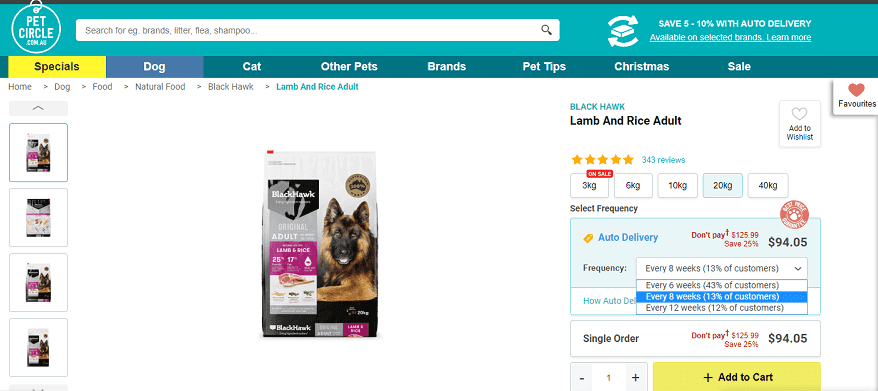
Wrap Up
Optimizing your customer’s journey is one of the most effective ways of increasing customer loyalty and boosting revenue for modern-day businesses. It is about connecting with customers depending on where they are on their purchase journey.
The four steps discussed above contain actionable ideas to enable you to align your selling process with your customer’s journey. Identify where you lag and begin executing them then gradually expand your implementation to grow your business today.
 Tips
Tips
We’d love to hear your tips & suggestions on this article!
FREE. All Features. FOREVER!
Try our Forever FREE account with all premium features!

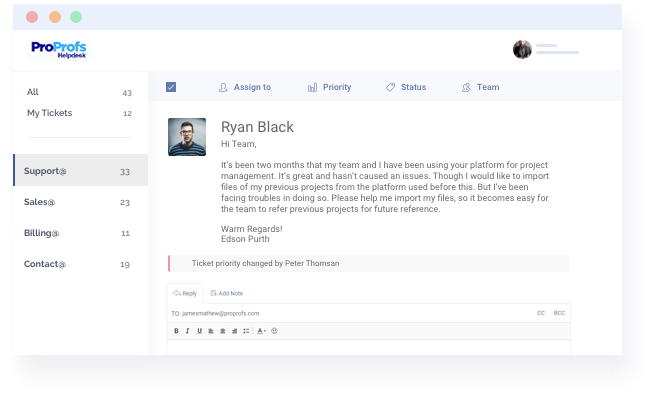
 We'd love your feedback!
We'd love your feedback! Thanks for your feedback!
Thanks for your feedback!



